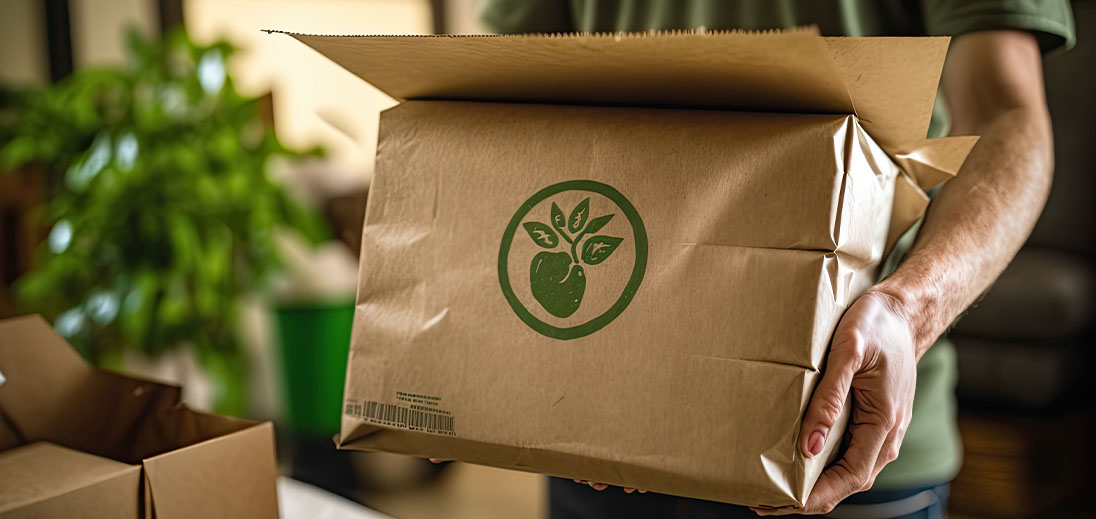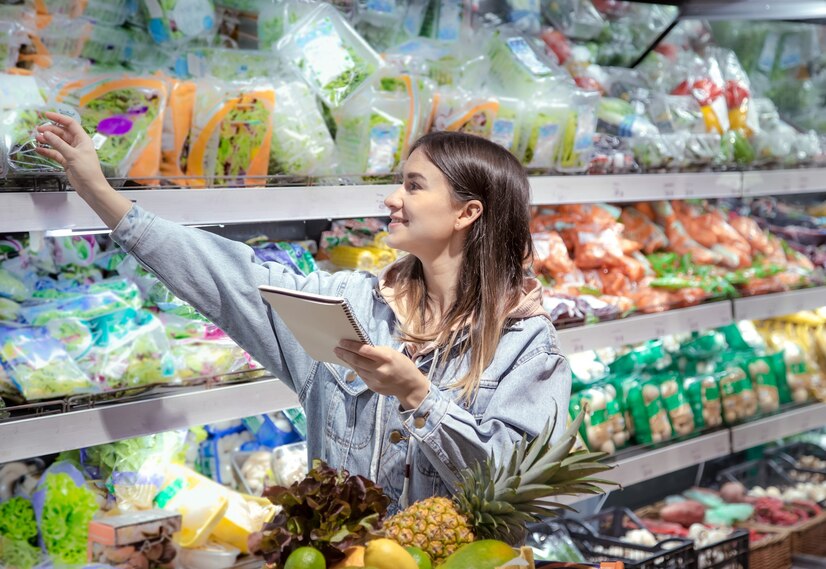General
Sustainable Packaging Solutions: Cardboard Boxes, Pallets, and Shrink Film

In today’s environmentally conscious world, businesses are increasingly seeking sustainable packaging solutions that reduce their environmental impact while maintaining the efficiency and effectiveness of their packaging processes. Three key components of sustainable packaging are cardboard boxes, pallets, and shrink film. In this article, we will explore how these elements contribute to sustainable packaging practices and offer benefits for businesses.
1. Cardboard Boxes: Eco-Friendly and Versatile
Cardboard boxes are a popular choice for sustainable packaging due to their eco-friendly nature and versatility. Here’s how they contribute to sustainable packaging:
- Renewable and Recyclable: Cardboard boxes are made from a renewable resource – paper. The paper used to manufacture cardboard boxes comes from sustainable forestry practices. Additionally, cardboard boxes are widely accepted for recycling, making them an environmentally friendly packaging option.
- Energy-Efficient Production: The production process of cardboard boxes requires less energy compared to other packaging materials such as plastic. This reduces the carbon footprint associated with manufacturing, further contributing to sustainable practices.
- Reusable and Biodegradable: Cardboard boxes can be reused multiple times before reaching the end of their lifecycle. This extends their usability and reduces the need for constant production and disposal. When cardboard boxes do reach the end of their lifecycle, they are biodegradable, meaning they break down naturally without causing harm to the environment.
- Customizable and Protective: Cardboard boxes can be easily customized to fit various product sizes and shapes, eliminating the need for excessive packaging materials. They provide excellent protection during transit, reducing the risk of damage to products and minimizing waste.
2. Pallets: Efficient Handling and Distribution
Pallets play a crucial role in sustainable packaging by optimizing handling and distribution processes. Here are the sustainability benefits of using pallets:
- Reduced Material Waste: Pallets allow for efficient stacking and organization of products, maximizing space utilization. This reduces the need for additional packaging materials and minimizes material waste.
- Enhanced Stability and Protection: Pallets provide a stable platform for loading and transporting goods. By securely stacking products on pallets, the risk of damage from shifting or falling during handling and transit is significantly reduced. This leads to fewer product losses and reduces the need for repackaging.
- Reusable and Recyclable: Pallets are designed for reuse in multiple shipments. They can be returned and used again, reducing the demand for new pallets and decreasing overall waste. When pallets reach the end of their lifespan, they can be recycled into new pallets or other wood-based products.
- Optimized Storage and Transportation: Pallets facilitate efficient storage and transportation by allowing for easy handling with forklifts or pallet jacks. This streamlines the loading and unloading processes, saving time, energy, and resources.
3. Shrink Film: Minimized Material Usage and Product Protection
Shrink film, when used responsibly, can be a sustainable packaging solution. Here’s how shrink film contributes to sustainable packaging practices:
- Material Efficiency: Shrink film requires less material compared to other packaging options, such as cardboard boxes or plastic bags. Its ability to conform tightly to the shape of products reduces the need for excess packaging material, resulting in less waste.
- Product Protection: Shrink film provides a protective layer around products, guarding them against dust, dirt, and moisture during transportation. This helps preserve the quality and integrity of the products, reducing the likelihood of returns or replacements.
- Recyclable Options: Many shrink films are now available in recyclable forms, allowing for responsible disposal and reducing the environmental impact. Businesses should opt for recyclable shrink films and promote recycling initiatives to further enhance sustainability.
- Downgauging: Downgauging refers to using thinner shrink films without compromising strength or performance. By selecting thinner films, businesses can minimize material usage while still providing adequate protection for their products.
Conclusion
Sustainable packaging solutions are a critical consideration for businesses aiming to reduce their environmental footprint. Cardboard boxes, pallets, and shrink film offer significant advantages in terms of sustainability. Cardboard boxes are renewable, recyclable, customizable, and protective. Pallets optimize handling and distribution processes, reduce material waste, and allow for reusability. Shrink film, when used responsibly, minimizes material usage and provides product protection. By incorporating these sustainable packaging elements, businesses can contribute to environmental conservation while ensuring efficient and effective packaging practices.

General
Exploring the History and Success Story of Kroger: America’s Favorite Grocery Store

Welcome to the captivating world of Kroger, America’s favorite grocery store! For over 138 years, this iconic brand has been a staple in households across the country, providing quality products and unbeatable convenience. But how did Kroger rise to such prominence? What strategies did they employ to become an industry leader? Join us as we delve into the fascinating history and success story of Kroger, uncovering the secrets behind its enduring popularity. From humble beginnings to nationwide acclaim, prepare to be inspired by Kroger’s journey from local grocer to household name. So grab your shopping cart and let’s explore the remarkable evolution of this beloved supermarket giant!
How Kroger Became a Household Name
How did Kroger become a household name? It all started back in 1883 when Barney Kroger invested his life savings to open the first store in Cincinnati, Ohio. With a commitment to quality and customer service, it didn’t take long for word to spread about this small grocery store.
Kroger’s success can be attributed to its dedication to meeting the needs of its customers. By offering a wide variety of products at affordable prices, Kroger quickly became a go-to destination for families looking to stock up on groceries.
But it wasn’t just the products that set Kroger apart – it was also their innovative approach to shopping. In the early 1900s, they introduced self-service shopping, allowing customers to browse and select items themselves instead of relying on employees.
As time went on, Kroger continued to adapt and evolve with changing consumer preferences. They were one of the first grocery stores to implement barcode scanning technology in the 1970s, making checkout faster and more efficient.
In recent years, Kroger has embraced online shopping with their ClickList service. Customers can now order groceries online and pick them up at their convenience without even leaving their car.
Through strategic mergers and acquisitions, Kroger has expanded its reach across the country. Today, they operate over 2,700 stores nationwide under various banners such as Ralphs, Fred Meyer, and Harris Teeter.
Kroger’s commitment goes beyond just providing groceries – they strive to make a positive impact on local communities through charitable donations and initiatives like Zero Hunger | Zero Waste which aims to eliminate food waste by 2025.
With over 138 years of experience under their belt, it’s no wonder why Kroger is still going strong today. Their dedication to quality products, convenience for shoppers,and community involvement have made them America’s favorite grocery store.
The Company’s Expansion and Growth
Kroger’s journey from a small grocery store to America’s favorite supermarket has been nothing short of remarkable. With a humble beginning in 1883, Kroger started as a single store in Cincinnati, Ohio. But it didn’t take long for the company to realize its potential and set its sights on expansion.
Driven by an ambitious vision, Kroger began acquiring other grocery chains across the country. By the 1950s, they had expanded into multiple states and established themselves as a leading player in the industry. This aggressive growth strategy continued over the years, allowing Kroger to establish a strong presence nationwide.
But it wasn’t just about expanding their physical footprint. Kroger also recognized the importance of adapting to changing consumer needs and preferences. They embraced technological advancements early on, implementing barcode scanning systems and self-checkout options to enhance efficiency and convenience for shoppers.
Furthermore, Kroger understood that diversification was key to sustaining growth in a competitive market. They ventured into new areas such as pharmacies, fuel centers, and even online shopping platforms like ClickList – all aimed at providing customers with added convenience while increasing sales opportunities for the company.
As technology continued to evolve rapidly, so did Kroger’s approach towards customer engagement. The introduction of personalized loyalty programs allowed them to tailor promotions based on individual shopping habits – fostering customer loyalty while driving increased sales.
Through strategic partnerships with local suppliers and farmers, Kroger has also made significant efforts towards supporting local communities while promoting sustainable practices within their operations.
With each passing year, Kroger continues its upward trajectory by consistently delivering quality products at affordable prices through innovative strategies – cementing itself as not only America’s favorite grocery store but also as an industry leader that shows no signs of slowing down anytime soon.
Innovative Strategies and Technologies Adopted by Kroger
Kroger, America’s favorite grocery store, has been constantly evolving to stay ahead of the competition. One of the key reasons for its success is the innovative strategies and technologies it has adopted over the years.
To improve customer experience and convenience, Kroger embraced technology by introducing self-checkout lanes in their stores. This not only reduces wait times but also gives shoppers more control over their shopping experience. Additionally, Kroger introduced mobile apps that allow customers to create shopping lists, access digital coupons, and even order groceries online for pickup or delivery.
In recent years, Kroger has invested heavily in data analytics to better understand its customers’ shopping patterns and preferences. By analyzing this data, they are able to personalize offers and recommendations tailored to individual shoppers. This personalized approach enhances customer satisfaction and loyalty.
Another area where Kroger shines is in its commitment to sustainability. The company has implemented energy-saving initiatives such as LED lighting in stores and using environmentally friendly refrigeration systems. They have also set ambitious goals for reducing food waste through partnerships with local food banks.
Furthermore, Kroger has embraced emerging technologies like artificial intelligence (AI) and robotics in its operations. For example, they have utilized AI-powered algorithms to optimize inventory management processes and robotic systems for efficient fulfillment of online orders.
By adopting these innovative strategies and technologies, Kroger stays at the forefront of the grocery industry while continuously improving customer experiences. As technology continues to advance rapidly, we can expect Kroger to keep innovating and finding new ways to cater to changing consumer demands.
Kroger’s Success Factors: Quality, Convenience, and Diversity
Kroger’s success can be attributed to several key factors that have helped the company become a household name in America. One of these factors is its commitment to quality. Kroger has always prioritized offering customers high-quality products, ensuring that they receive fresh and delicious food every time they visit their local store.
In addition to quality, Kroger also places great emphasis on convenience. The company understands the importance of saving customers’ time and effort by providing them with convenient shopping experiences. With initiatives such as online ordering and curbside pickup, Kroger has made it easier than ever for shoppers to get their groceries without having to navigate crowded aisles or wait in long checkout lines.
Another factor contributing to Kroger’s success is its dedication to diversity. The company recognizes the diverse needs and preferences of its customer base and strives to cater to them accordingly. Whether it’s through offering a wide range of organic and gluten-free options or stocking international foods from various cultures, Kroger ensures that there is something for everyone on its shelves.
By focusing on these three key factors – quality, convenience, and diversity – Kroger has been able to cultivate a loyal customer base who appreciate the value that the company brings into their lives. This commitment continues today as Kroger remains a reliable destination for all grocery needs across America.
Impact on the Local Community and Environment
Kroger, America’s favorite grocery store, understands the importance of being a responsible corporate citizen. Throughout its long history, Kroger has consistently demonstrated a commitment to making a positive impact on local communities and the environment.
One way Kroger contributes to the community is through its charitable initiatives. The company believes in giving back and supports numerous organizations that focus on hunger relief, health education, and disaster response. In fact, Kroger donates millions of pounds of food each year to local food banks and partners with Feeding America to help fight hunger across the country.
In addition to supporting charitable causes, Kroger also prioritizes environmental sustainability. The company actively works towards reducing waste, conserving energy, and minimizing its carbon footprint. Through various initiatives such as recycling programs and energy-efficient practices in their stores and distribution centers, Kroger strives to make a positive difference for future generations.
Furthermore, Kroger recognizes that its customers are increasingly concerned about sustainable sourcing and eco-friendly products. To meet these demands, they have expanded their selection of organic foods and environmentally friendly household items. By offering these options at affordable prices, Kroger enables customers to make more conscious choices while shopping.
Conclusion: Why Kroger is Still Going Strong After 138 Years
After exploring the rich history and success story of Kroger, it becomes clear why this beloved grocery store has stood the test of time for over a century. With its humble beginnings as a small corner grocery store in Cincinnati to becoming one of America’s favorite supermarket chains, Kroger has consistently demonstrated its commitment to innovation, quality, convenience, diversity, and community impact.
One key factor that sets Kroger apart from its competitors is its relentless pursuit of providing high-quality products to its customers. From sourcing fresh produce directly from farmers to partnering with local suppliers and artisans for unique offerings, Kroger ensures that shoppers can trust the freshness and reliability of their purchases.
Additionally, Kroger has always been at the forefront of adopting innovative strategies and technologies to improve customer experience. The introduction of self-checkout lanes, online ordering with curbside pickup or delivery options through platforms like Instacart or Shipt have made shopping more convenient than ever before. This focus on embracing new trends and meeting evolving consumer needs has allowed Kroger to stay relevant in an increasingly competitive market.
Furthermore, diversity plays a crucial role in both Kroger’s workforce and product selection. By fostering an inclusive environment where employees feel valued regardless of their background or ethnicity, Kroger’s creates a welcoming atmosphere for both employees and customers alike. Moreover, the wide range of international cuisine options available reflects their commitment to catering to diverse tastes and preferences within the communities they serve.
Kroger’s dedication extends beyond just being a successful business; it actively contributes back to society by supporting various initiatives focused on hunger relief programs educational scholarships for associates’ children through The Fred Meyer Scholarship program environmental sustainability efforts such as reducing food waste.
-

 News7 months ago
News7 months agoUncovering the Hidden History of Chagaras: Exploring the Origins and Evolution
-

 LifeStyle7 months ago
LifeStyle7 months agoGuia Silent Hill Geekzilla: Navigating the Shadows in Style
-

 Technology7 months ago
Technology7 months agoGeekzilla Autos: A Fusion of Tech and Automotive Brilliance
-

 News7 months ago
News7 months agoAbraham Quiros Villalba: Rising from Humble Roots to Remarkable Success
-

 Technology7 months ago
Technology7 months agoUnveiling the Secrets of “qxefv”: Mastering the Art of SEO and Content Creation
-

 Technology7 months ago
Technology7 months agoGeekzilla Tech: Navigating the Geek Universe with Innovation
-

 Entertainment7 months ago
Entertainment7 months agochargomez1: Revolutionizing Your Experience
-

 Technology7 months ago
Technology7 months agoAmazons GPT44X: Revolutionizing Language Models